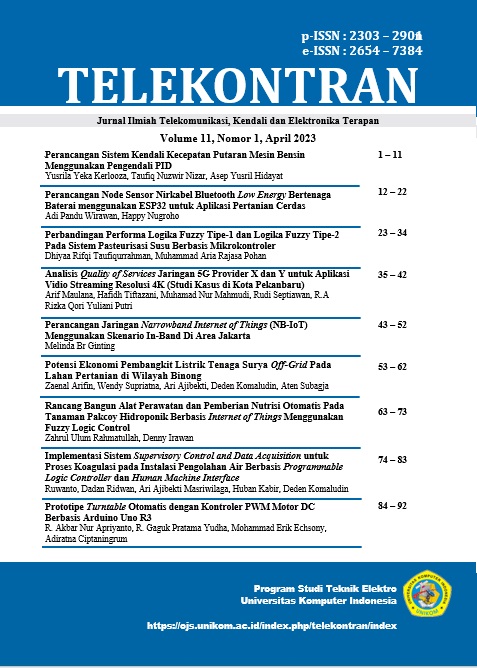Control System Design of Gasoline Engine Rotation Speed Using PID
Main Article Content
Abstract
Abstract - The need for an effective and efficient control system is now increasingly needed, for example in the waste sorting industry that uses a gasoline engine conveyor belt as a means of mobilizing waste to be sorted, but different waste loads result in unstable conveyor belt movements. This study aims to control the rotational speed of the gasoline engine by applying sensors and control actuators that are implemented with the PID control system algorithm, as well as finding the right KP, Ki, Kd parameter values so that the speed can reach the set point with the best time and stability. The study was conducted on a Stihl PC-75 gasoline engine using a hall effect sensor as a speed sensor, a potentiometer sensor used to determine the gas position, and a speed control actuator, namely a DC motor designed to pull the throttle throttle cable, to process data processing carried out on a microcontroller. Arduino Mega 2560. The results obtained from this study are the hall effect sensor is able to read speeds up to 18000 rpm using a moving average filter worth 25 sampling, and the gas control actuator is able to work on this system, the best PID parameter value to reach the set point of 8000 rpm is at the value of Kp = 0.51, Ki = 0.3, Kd = 5, it takes 15.5 seconds to reach a stable state and with a stability error of 3.88%.
Keywords: PID, gasoline engine, hall effect, speed, stability.
Downloads
Article Details
Section

This work is licensed under a Creative Commons Attribution-ShareAlike 4.0 International license.
